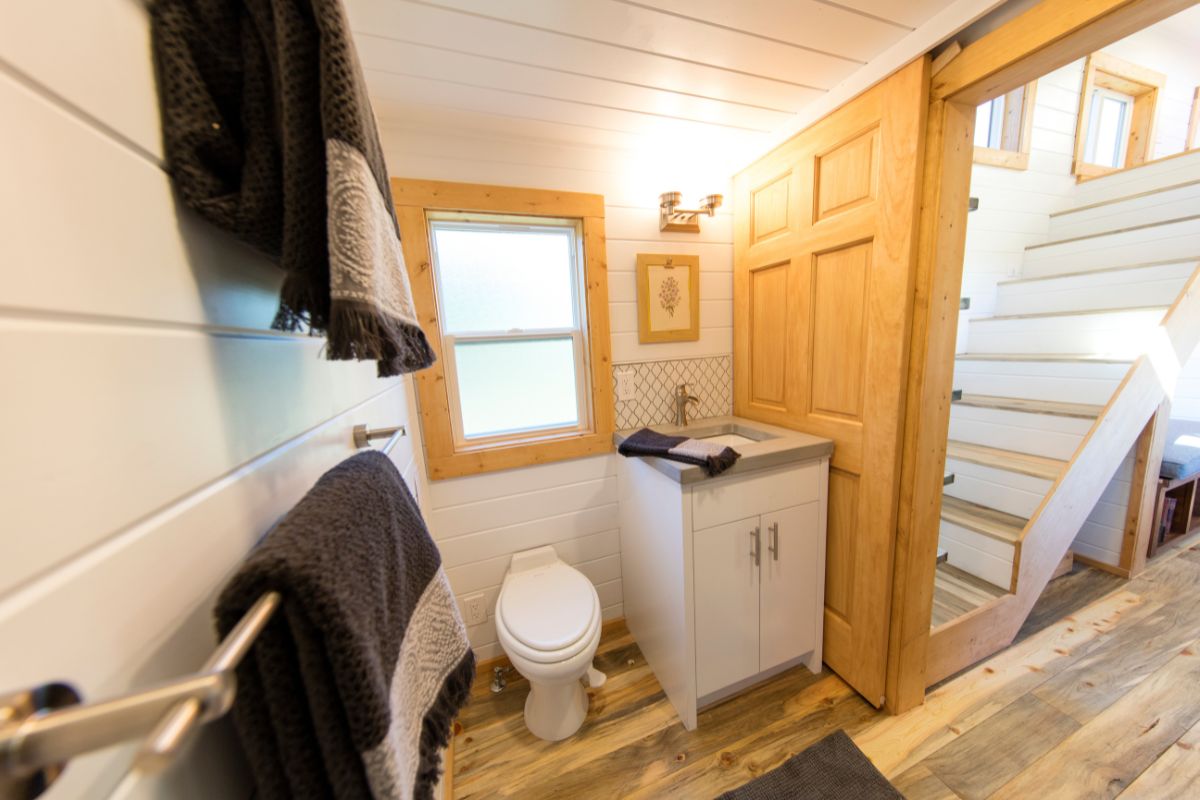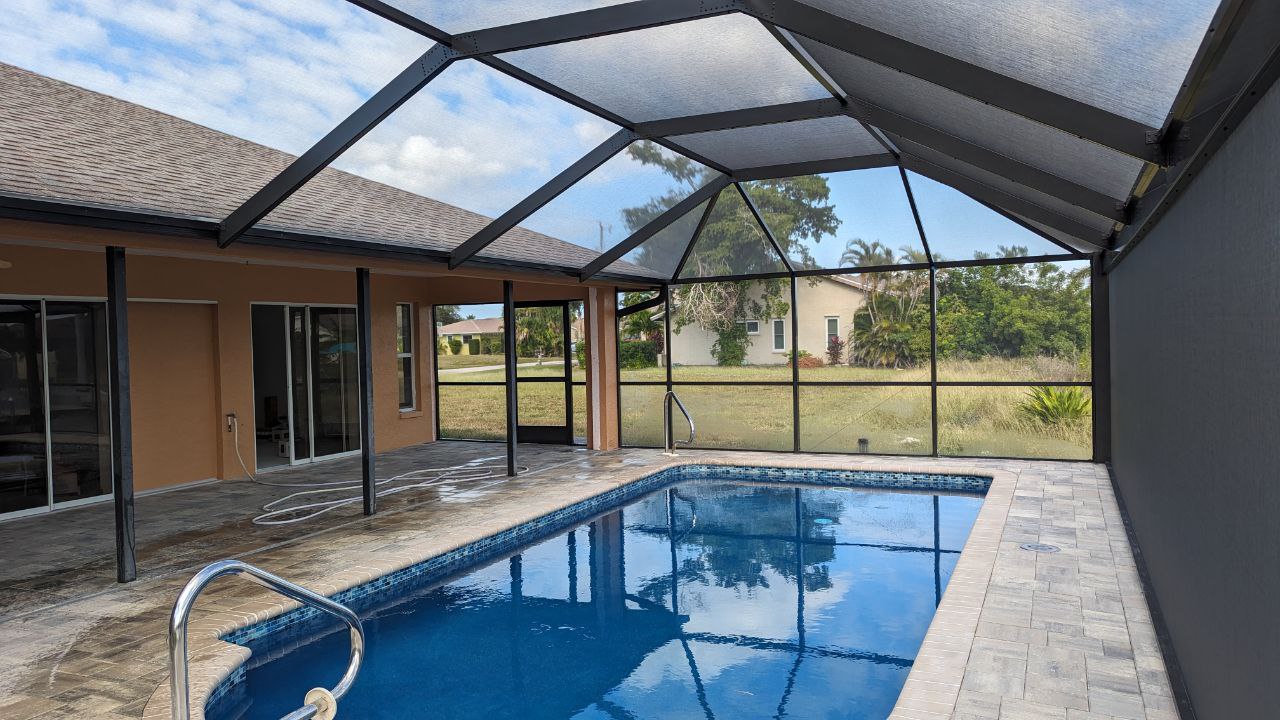Mornings tell the truth about a small space. The kettle murmurs, sunlight slides across the counter, and you make three unhurried steps from sink to ladder without brushing a wall. That quiet choreography is what a good video tour captures.
It isn’t a sales pitch or a slideshow of pretty corners. It’s a calm, guided walk that lets someone understand how the home flows, where things live, and why the layout works when the door closes and real life begins.
This guide leads you from planning and filming through a clean CapCut edit, so the finished tour looks honest, sounds clear, and keeps viewers watching to the end.
Plan before you press record button
Start with intention and clear vision. Tiny homes reward focus, and so do viewers.
-
Choose your promise. Write a single, specific sentence you intend to prove on camera. For example: “In twenty-six feet, we fit a true staircase, a workable bath, and a kitchen that cooks daily meals.” Keep it visible while you film and edit; it becomes your filter for what to include.
-
List the moments that matter. Walk the house with a notepad and jot the beats people care about: door swing and clearances, stair drawers, loft headroom, shower fit, aisle width, breaker panel and water shutoffs, shoe storage, laundry stash. Those lines become shots.
-
Decide the path. First, present rooms in the order a guest would experience them: outside, entry, living, kitchen, bathroom, loft or bedroom, storage, utilities, etc, etc. If your headline feature is the kitchen, it’s fine to start there, just maintain a logical flow. Without a logical flow, the footage would look like a mess and that’d end up in confusing the consumer.
-
Stage and quiet. Clear counters and hide chargers, wipe shiny surfaces, coil cables, and turn off fans or humming appliances. If the room echoes, add a rug or throw. Set blinds to the same height in every room so brightness doesn’t jump from shot to shot.
A short practical note on light: film when daylight is soft.
If one corner needs help, use a single dimmable LED bounced off a wall rather than pointing a harsh light at your subject.
Shoot like a person who lives there
You don’t need cinema gear; you need steady frames, truthful lines, and intelligible audio. When you shoot like a person who actually lives there, it adds a different value to your footage.
-
Height and horizon. Keep the lens near chest level and level to the floor so vertical lines remain straight. Tilting up in small rooms makes ceilings loom and distorts scale.
-
Movement. Walk slowly, stop for a breath, then continue. That brief pause gives you clean edit points.
-
Lens choice. Use ultra wide only if walls stay straight. When in doubt, step back and keep the camera level.
-
Lock your exposure. On phones, tap hold to lock focus and exposure, on cameras, set white balance near 5000 to 5600K for daylight and use a shutter speed around double your frame rate.
-
Record room tone. Capture twenty to thirty seconds of silence in each area. You’ll use it to smooth edits later. And the footage comes handy, all the time.
The shots viewers expect for house photography (and why)
Short clips with purpose beat long pans that say nothing. Each item below deserves a few seconds and, when useful, a human for scale.
-
Exterior and approach. Establish where the home sits and how you enter. A slow move toward the door works well.
-
Entry and living. Show the threshold, then two opposing angles so the room’s shape is obvious. Demonstrate the sofa converting or the table folding down at normal speed.
-
Kitchen. Show the work triangle in action: fridge, prep space, cooktop, sink. Open a couple of drawers to reveal organizers; viewers want to see where pans and utensils actually go.
-
Bathroom. Film the door swing and stand in the shower so size is clear. If you use a composting unit, mention the model and show where the vent runs in a single clean shot.
-
Loft or bedroom. Record the climb path with hands on rails and a few steps on the treads, then a quick moment that reveals headroom.
-
Storage and utilities. Show breaker box, shutoffs, filters, water heater access, and the ordinary realities: shoes, coats, laundry. If you have a winter/summer setup, show the swap in a two-second before/after.
Narration that feels human without language barrier

Write the script as answers to real questions: What makes this layout work for your day? Where did you sacrifice? Which detail surprised you after a month? Keep sentences varied in length so the voice breathes.
Recording near soft surfaces, inside a closet usually works, that’s what I tried for my first video, and smiling while speaking affects tone more than you’d think. Another cool thing is that using CapCut’s text to audio generator, you can generate voice for any language you want. You can do English, Russian, Spanish, or other available options within the app.

If you prefer not to record your own voice, you can generate a natural voice track with text to audio free and refine the script until the pacing fits your pictures.
Edit in CapCut: the complete workflow
Below is a practical sequence for CapCut on desktop (you can also edit on phones, but i like doing it on the desktop). Each step includes what to click and what you’re aiming to achieve.
1) Create the project and set the canvas.
Open CapCut and start a new project at 16:9 for a full tour. Name it clearly, such as something like “Tiny Tour v1.”
You must set frame rate to match most of your footage, for me 30fps works great but you can choose from 24, 25, or 30, the choice is yours. This prevents stutter from mismatched clips and keeps consistency.
2) Import and organize the media.
It’s time to bring all video, audio, room-tone files, and any floor-plan images into the Media bin.
Once it’s imported, now create folders for Exterior, Entry, Living, Kitchen, Bath, Loft, Storage, Utilities, B-roll, and Audio. Now, rename critical clips so they’re findable. Trust me, ten minutes spent organizing saves an hour later. You’re welcome!
3) Build a skeleton cut.
If you have narration ready, place it on Audio 1 from the start. If not, drop a temporary track to set rhythm, or create a draft narration using the tool linked above. Now pull one strong clip per beat onto Video 1 following your tour path. Trim with Split so every shot starts on action and ends with a comfortable handle.
4) Replace wobbles, stabilize what’s worth saving.
Select any clip that drifts and apply Stabilize at the lightest setting that calms the shake. In tight interiors, heavy stabilization warps straight lines. If a pan still looks off, swap it for two steady angles rather than forcing a fix.
5) Match color simply and consistently.
I like consistency, that’s what you’ll see across all my portfolio. In this step, choose a well exposed daylight clip that looks true to life. Now, in Color, adjust white balance first, then exposure and contrast until whites are clean and skin tones look natural. Just copy these settings and paste to adjacent clips in the same room. Remember that consistency across a space matters more than perfection in one shot. It brings harmony to your work and does wonders. This is what distinguishes between a good one and a pro one.
6) Add captions that help real viewers.
Use Auto Captions, then proof for names and numbers. Many people watch on mute, and captions also help second-language viewers who care about dimensions and model names. Keep the font clean and the size large enough to read on a phone without covering hinges or hands.
7) Label dimensions and show the plan without clutter.
Create small text labels for three to five practical facts—aisle width, loft peak, stair rise, tank capacity. Keep them near edges. For orientation, add a floor-plan PNG as an overlay at reduced opacity for the first half-minute, then fade it out so the images can breathe.
8) Balance the mix so the home sounds lived in.
Place narration on Audio 1 and set peaks around ~ 6 dB. Add music to Audio 2 and ride it low beneath the voice so it supports rather than competes. Tuck a whisper of room tone under tricky cuts to mask joins.
If your voice is clean but a little bit thin, you can remove harshness using the editing software such as CapCut. For a subtle tonal change without sounding too artificial, you can experiment with a restrained voice changer and keep the effect minimal.

CapCut’s Voice Changer is a game changer, and does wonders when it comes to realistic voice generation for footage like this.
I’d leave it to you for exploration.
9) Use motion for reveals, not for decoration.
Most transitions should be straight cuts. Add a short cross-dissolve only when time clearly passes between shots. If you want emphasis, apply a mild speed ramp to a reveal, a pocket door sliding, a table unfolding, but avoid constant ramping; the eye tires quickly.
10) Let automation handle grunt work, not taste.

When you’re buried in clips, it’s fine to use an AI video editor to detect scenes or trim long silences. Treat this as an assistant: you still decide pacing, order, and which details tell the truth of your home.
11) Perform two reality checks.
First, do the mute test. Watch without sound, do labels and images communicate the layout clearly? Second, do the eyes-closed test. Listen only, does the narration paint a picture you can follow? Fix the weak parts immediately by tightening a shot, rewriting a line, or moving a label.
12) Export a clean master and create the vertical version.
Now comes the almost final step.
For the main upload, you’ve to export MP4 at 4K if available (otherwise 1080p also works for me tbh), using the project frame rate with a high bitrate and audio at 48 kHz.
You’ve to name it clearly so you can track revisions. For short form, duplicate the project, change the canvas to 9:16, and re-frame each shot so faces and labels sit in the safe center. The hook should land within the first three seconds otherwise you’ll lose the audience.
Thanks to short format videos, attention span is getting low and low, and earning the attention of the person watching the reel has become a challenge. If you focus on it, your video shall go well.
Titles, thumbnails, and description that respect the viewer
A clear promise beats clever wordplay. Promise what the video delivers and deliver what the title promises. Shoot the thumbnail as a deliberate still with the door open and a person in frame for scale. Use a single short line of text if you must, and keep the frame tidy.
In the description, list dimensions, power and water basics, any modifications, and chapters with timestamps so people can jump to the section they care about.
Common problems, simple fixes
-
Space looks cramped. Just lower the camera to chest height, keep it level, and avoid extreme ultra wide. This shall solve the cramped space issue. If you need a wider field, step back rather than tilting up.
-
Color jumps between clips. Lock white balance while filming; in edit, paste color settings from your best clip to neighbors to maintain consistency.
-
Voice sounds harsh or hollow. Record closer to soft surfaces, reduce harshness gently with EQ, and keep music well below the voice.
-
Reflections spoil shots. Shift your position by a foot or two, adjust the angle, and let a partner open doors so you’re not visible in mirrors or glossy cabinets.
Why CapCut suits tiny home creators
Editing a tour is about clarity and rhythm more than special effects. CapCut’s timeline feels straightforward when you’re new yet stays capable as your standards climb. It keeps captions, labels, color tweaks, and audio shaping in easy reach so you can move quickly after a long day of real work.
If you ever need to experiment with automated assists, those tools are available, if you want to iterate narration without re-recording immediately, the text to audio option helps you test timing before you commit to the mic.
Closing scene
When you export the final cut and the room goes quiet, the best parts usually aren’t the glossy surfaces but the small proofs of a life that fits: the steadiness of a stair tread, the soft thud of a drawer that lands square, the way two people pass in a narrow aisle without a dance.
That’s the heartbeat of a tiny home tour when it’s done well.
You’ve shown how the space works, not just how it looks, and you’ve given strangers enough detail to imagine their own morning routine inside four small walls.
Publish it, answer questions with timestamps, and let the next builder borrow a good idea with a smile.






Share: